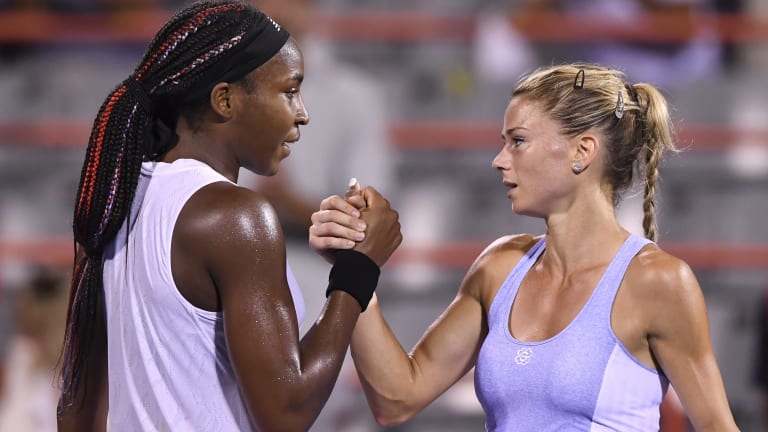National Bank Open
Less is more: Camila Giorgi serves up straight set win over Coco Gauff
By Aug 14, 2021National Bank Open
Coco Gauff begins road to US Open with win in Toronto; Elise Mertens beats Naomi Osaka
By Aug 09, 2024National Bank Open
Defending champion Jessica Pegula makes winning start in Canada over Karolina Pliskova
By Aug 08, 2024National Bank Open
Naomi Osaka makes Sailor Moon magic to stun Ons Jabeur in Toronto, kick off US Open swing
By Aug 07, 2024National Bank Open
Bianca Andreescu beaten by Lesia Tsurenko in Toronto in first hard-court match of the season
By Aug 07, 2024National Bank Open
Jessica Pegula races past Liudmila Samsonova in less than an hour to win Montreal
By Aug 13, 2023National Bank Open
Liudmila Samsonova beats Elena Rybakina to reach Montreal final
By Aug 13, 2023National Bank Open
Jessica Pegula solves Iga Swiatek to reach Montreal final
By Aug 13, 2023National Bank Open
Saturday Previews: Iga Swiatek vs. Jessica Pegula; Jannik Sinner vs. Tommy Paul
By Aug 12, 2023National Bank Open
At 2:55 a.m. and 20 breaks of serve later, Elena Rybakina finishes off Daria Kasatkina in Montreal epic
By Aug 12, 2023National Bank Open
Less is more: Camila Giorgi serves up straight set win over Coco Gauff
The Italian will play in her first career WTA 1000 semifinal on Saturday.
Published Aug 14, 2021
Advertising

Camila Giorgi and strategist Craig O'Shannessy have cooked up a winning recipe.
© 2021 Getty Images